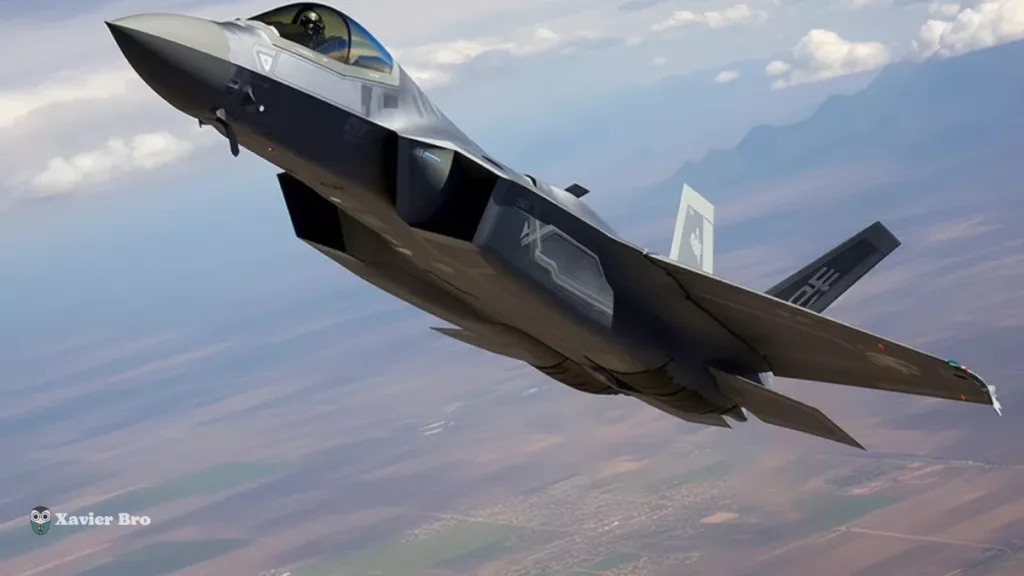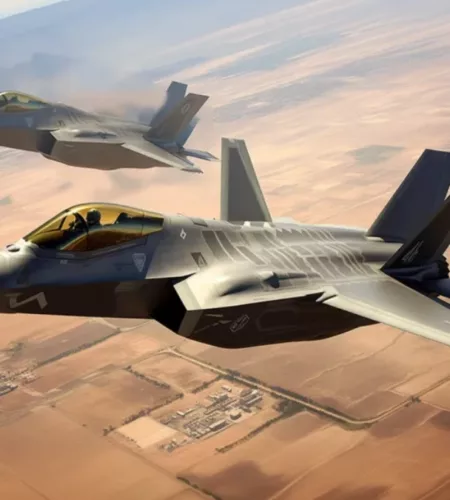The F-22 and F-35, America’s top fighter jets, were created to offer the US and its allies technical advantages against opposing planes and deliver overlapping abilities to defeat hostile aircraft. However, they are also built for different roles, which showcase their contrasting strengths. This article covers a detailed comparison of F22 vs F35. Continue reading!
Key Takeaways
- The F22 best controls the skies and beats enemy planes in dogfights. It uses stealth, top speed, and turning ability.
- The F35 is made to do many missions, like attacking targets, spying, engaging in electronic warfare, and supporting the F22. It is a versatile multi-role jet.
- Both jets use stealth technology to avoid being detected by radar. The F22 hides even better to control the skies.
- Their advanced electronics let them share information and understand the battlefield. This makes them more effective.
- The F22 flies faster (Mach 2) than the F35 (Mach 1.2).
Origins and Purpose
The F22 fighter jet was designed mainly to control the skies in battle. It uses stealth and top-level speed and maneuverability to outperform enemy planes. The F22 entered service in 2005 and is still the best dogfighter.
The F35 was made to fix issues with old planes. It can do many kinds of jobs like attack stuff below, spying, hacking, and dogfighting. The F35 first took off in 2006. It started missions in 2015. It complements fighters like the F22 with extra abilities.
While the F22 focuses on dominating the skies, the F35 is a versatile multi-mission plane. Their different strengths allow the two advanced jets to work together effectively. The F22 handles enemy fighters, and the F35 provides firepower against targets below.
Speed and High Altitude Capabilities
The F22 is the fastest fighter jet that is used today. It can fly at super-fast Mach 2 speeds. That is around 1500 miles per hour! The F35 jet is slower. It can only go to speeds of 1200 miles per hour at most.
The F-35 uses particular engines called afterburners to go its fastest. Afterburners run out of power more quickly.
The planes also fly at different heights. The F22 can fly the highest to about 65,000 feet in the air! That is over 12 miles high! The F35 tops out at around 50,000 feet up.

Stealth Capabilities: F22 vs F35
The F22 and F35 are special planes that can be hard to see on the radar. They have a shape and special coatings to stay unseen.
The F22 is best at not being noticed. Its main job is to fight other fighter aircraft in the sky.
The F35 is also sneaky on the radar. But it does other work, like taking pictures to gather information or attacking targets on the ground with bombs. Doing many things means it can’t hide, as well as the F22. But the F35 helps in lots of ways.
The two planes work together. The F22 dominates the skies over any enemies. Down below, the F35 can attack many kinds of targets to help win. Staying unseen on the radar is vital for them both.
Advanced Avionics
Owing to their 5th-generation status, both aircraft boasts some of the most advanced avionics and situational awareness capabilities ever in an operational fighter jet. This includes advanced Active Electronically Scanned Array radars, electronic warfare capabilities, sophisticated communication systems that enable information relay between friendly forces, and helmet-mounted displays that allow pilots a transparent battlefield view.
This high level of electronic connectivity represents a significant force multiplier in combat scenarios. The F35’s avionics are suited for multi-role functionality, granting it targeting and sensing features that make it highly effective in air-to-ground strikes and intelligence gathering.
Weapons Capabilities and Payloads
In terms of conventional payloads, the F35 outclasses the F22. Though designed as an air superiority fighter, the F22 can carry a modest weapons load of 6 AIM120 AMRAAM missiles & 2 AIM9 missiles internally. The F35, the other hand, can house larger payloads of munitions internally across its now synonymous weapon bays.
Range & Deployment Capability
Both aircraft can be refueled in the air, so their ranges extend as long as tanker support is available. Regarding internal fuel storage, the F22 pips the F35 with larger 685 US gallon tanks that facilitate longer 600 nautical mile combat radii. The F35’s 45,000 lbs of fuel provides a slightly lower 590 nautical mile combat radius. One kind of F35 called the F35B can take off and land straight up and down.
Other fighter jets need a runway to zoom down to take off. Going straight up and down lets the F-35B be used on small ships that don’t have runways. The Marines and Navy use this F-35B on small carriers and ships. So, the F35B can fly from more types of ships and places than jets like the F-22, which go down runways the usual way.
F22 vs F35: Cost of Operation and Maintenance
As expected from advanced bleeding-edge combat aircraft, the F22 and F35 carry hefty price tags, well over $100 million for unit procurement costs. It costs more money and works to keep the F22 jet flying than the F35. Every hour the F22 is in the air costs around $68,000!
The F-35 only costs $44,000 for each hour. The F22 needs more care and fixes. The unique stealth coat that makes it hard to see also has problems and is tricky to take care of. So, while the F-22 is a fantastic plane, the cheaper F35 makes it easier to keep flying missions with fewer repairs and costs.
The F35, on the other hand, was designed with maintainability in mind, with commonality of parts across its variants, built-in diagnostic systems to identify issues, and the facility to apply any upgrade across the fleet. This makes it more cost-effective for militaries in the long run.
Crazy Facts
- The advanced F22 Raptor enjoys fame as the world’s first fifth-gen fighter plane off the production line.
- The Raptor carries some serious radar firepower, catching a whiff of threats from up to 120 miles out and keeping close tabs on them.
- The F35 brings some slick moves to the battle with its ability to take off fast and land vertically.
- Packing its radar punch, the F35 can spot bogies from 100 miles out.
Conclusion
Regarding dominating the airspace, the F22 Raptor is genuinely in a class of its own next to the F35. Outperforming the F35 in several critical areas related to aerial combat maneuvers, the Raptor has an edge.
However, the versatile F35 strikes back through diverse combat roles, advanced avionics, and weapons options. While their direct engagement outcomes vary, the two jets present tailored 5th-generation capabilities that align with different Air Force operational needs.
FAQs about F22 vs F35
1- How many F22s and F35s have been built so far?
Having cut short the F22 program, only 195 aircraft were ultimately produced. Over 800 F35s have rolled off production lines up till now across all variants of the jet.
2- Can the F35B vertical takeoff variant land vertically as well?
The F35B can take off and land vertically on platforms like LHD/LHA amphibious assault ships, providing unique operational flexibility.
I hope you enjoy our article. Do check out more of our amazing articles.
